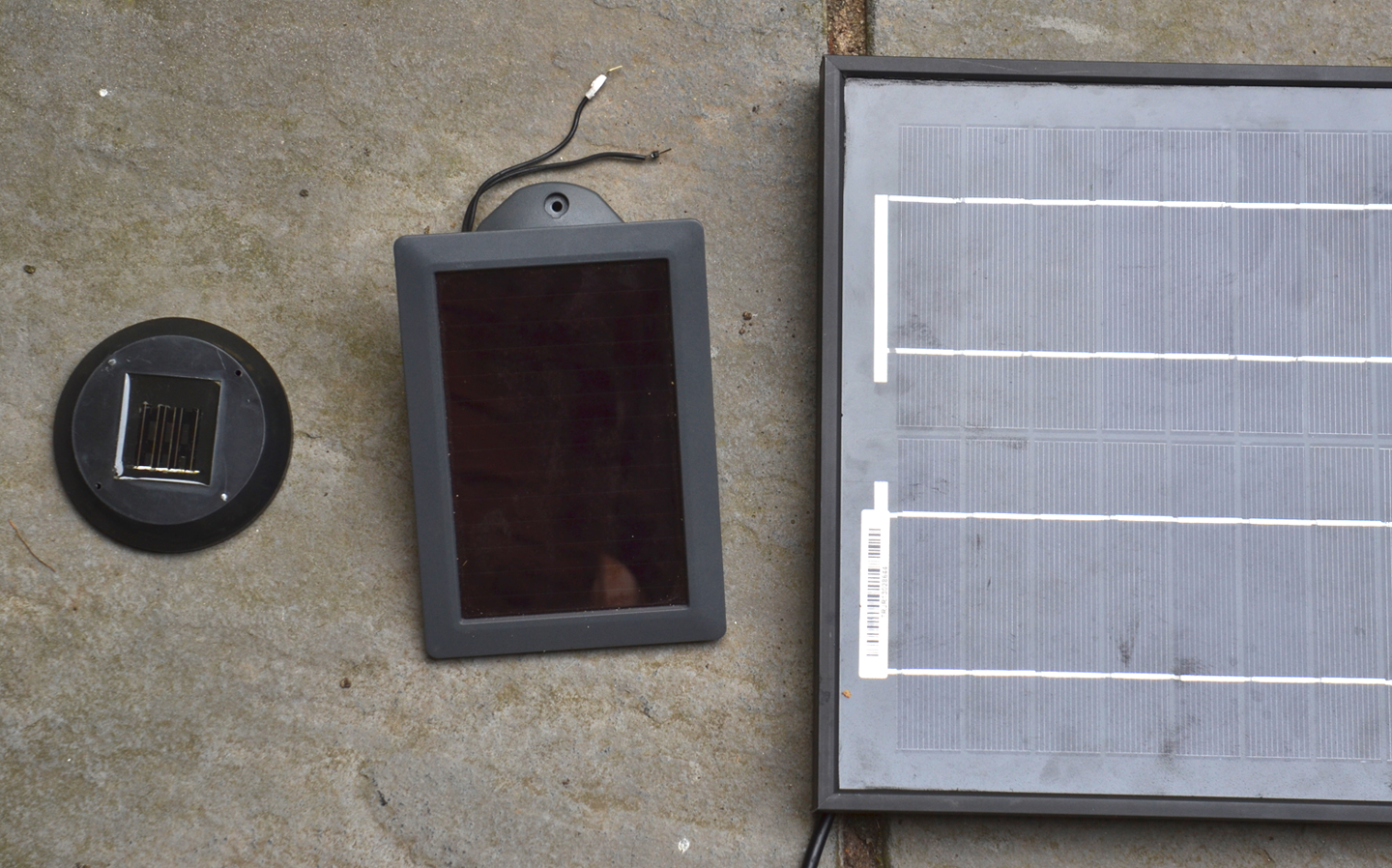Chapter 9. Solar Power
9.0 Introduction
This chapter is all about generating electricity from the sun using photovoltaic cells. The related topic of storing and using energy to power your projects or an Arduino or Raspberry Pi are also covered.
9.1 Power Your Projects with Solar
Problem
You want to understand how to power an electronics project using solar power, so that you are not dependent on power or the need to regularly replace batteries.
Solution
Use a photovoltaic solar panel (Figure 9-1) to generate electricity to trickle charge a battery that then supplies your project. The leftmost panel in Figure 9-1 is reclaimed from a low-power solar LED on a stick that cost about $1.50.
Figure 9-2 shows the schematic for solar charging a battery.
Solar panels are made up of a number of solar cells wired together in series to increase the output voltage. You will need a solar panel with an output voltage that is greater than the battery voltage.
The diode D1 is essential to prevent current from flowing back through the solar panel and damaging it when the solar panel is not illuminated enough for its output voltage to exceed the battery voltage.
R1 sets the charging current in just the same way as trickle charging (Recipe 8.4). As with trickle charging, you can also use a current regulator such as the one described in Recipe 7.7.

Figure 9-1. A Selection of Solar Panels—Left ...
Get Electronics Cookbook now with the O’Reilly learning platform.
O’Reilly members experience books, live events, courses curated by job role, and more from O’Reilly and nearly 200 top publishers.

